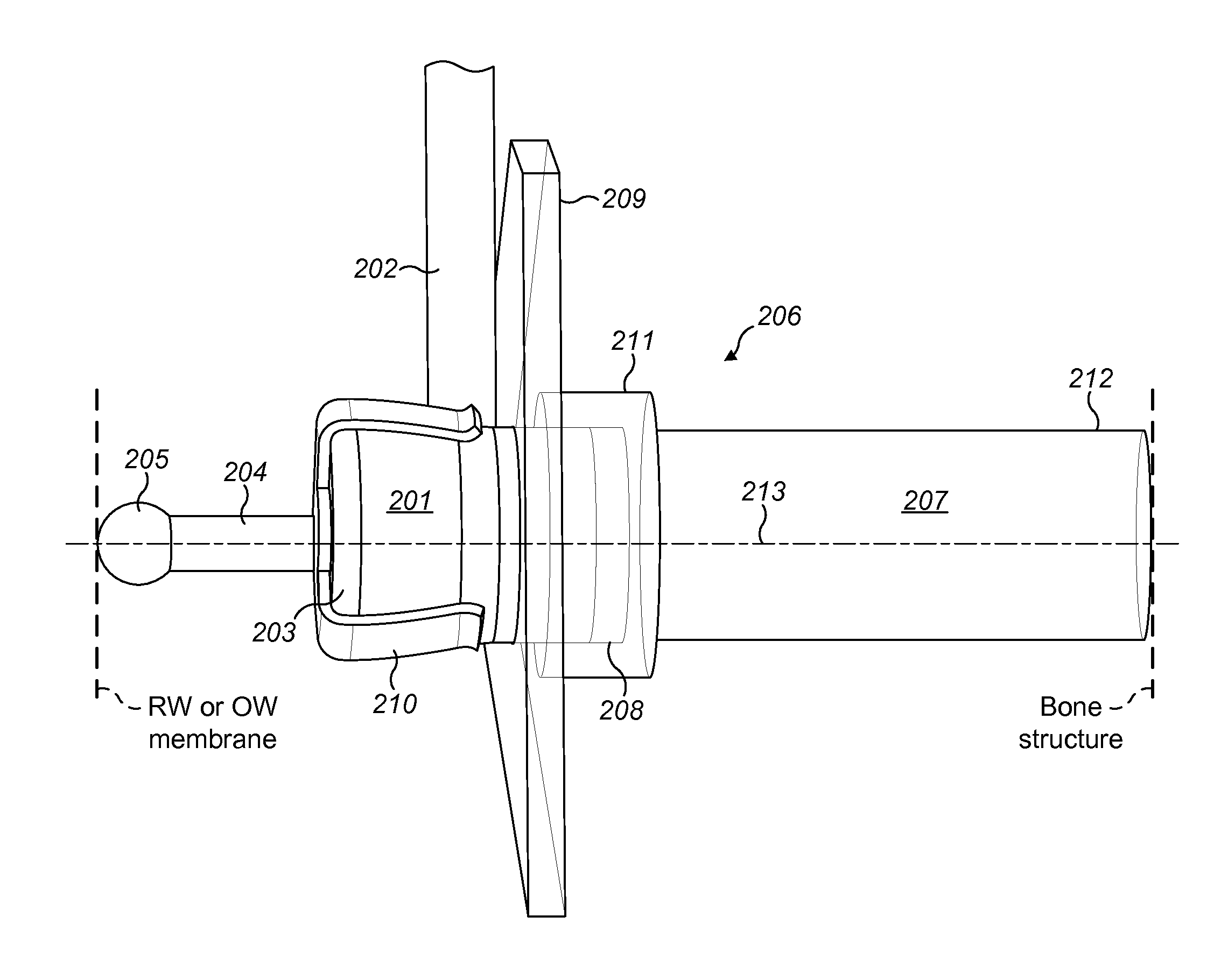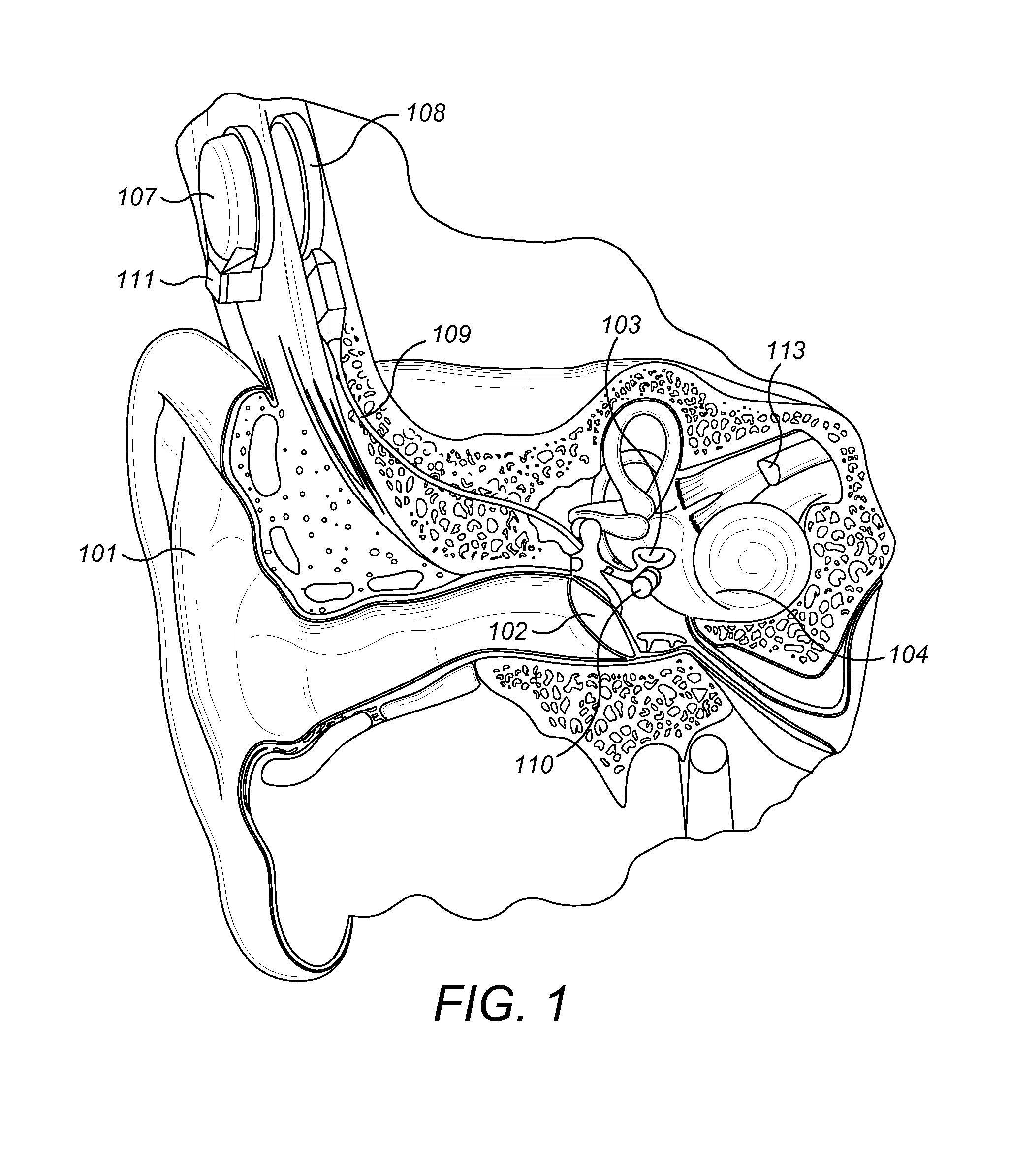Optimal Pre-Load for Floating Mass Transducers
a technology of floating mass transducers and preload, which is applied in the field of medical implants, can solve the problems of causing the patient to unable to produce, and the patient can be placed in a worsening position
- Summary
- Abstract
- Description
- Claims
- Application Information
AI Technical Summary
Benefits of technology
Problems solved by technology
Method used
Image
Examples
Embodiment Construction
[0019]Various embodiments of the present invention are directed to a middle ear implant arrangement based on a loading structure for a hearing implant transducer that is adapted to develop a spring force that presses one end of the electromechanical transducer to firmly engage it against an outer surface of the implant patient's cochlea.
[0020]FIG. 2 shows one specific embodiment where an implantable electromechanical transducer 201 such as a floating mass transducer converts an electrical stimulation signal input from FMT signal lead 202 into a corresponding mechanical stimulation signal output. The transducer 201 has a cylindrical shape with an inner end 203 and an outer end 208. A cochlea engagement member 204 at the inner end 203 of the electromechanical transducer 201 has an engagement surface 205 for coupling the mechanical stimulation signal to an outer cochlear surface of a recipient patient, for example, the round window or oval window membrane.
[0021]A transducer loading str...
PUM
 Login to View More
Login to View More Abstract
Description
Claims
Application Information
 Login to View More
Login to View More - R&D Engineer
- R&D Manager
- IP Professional
- Industry Leading Data Capabilities
- Powerful AI technology
- Patent DNA Extraction
Browse by: Latest US Patents, China's latest patents, Technical Efficacy Thesaurus, Application Domain, Technology Topic, Popular Technical Reports.
© 2024 PatSnap. All rights reserved.Legal|Privacy policy|Modern Slavery Act Transparency Statement|Sitemap|About US| Contact US: help@patsnap.com










